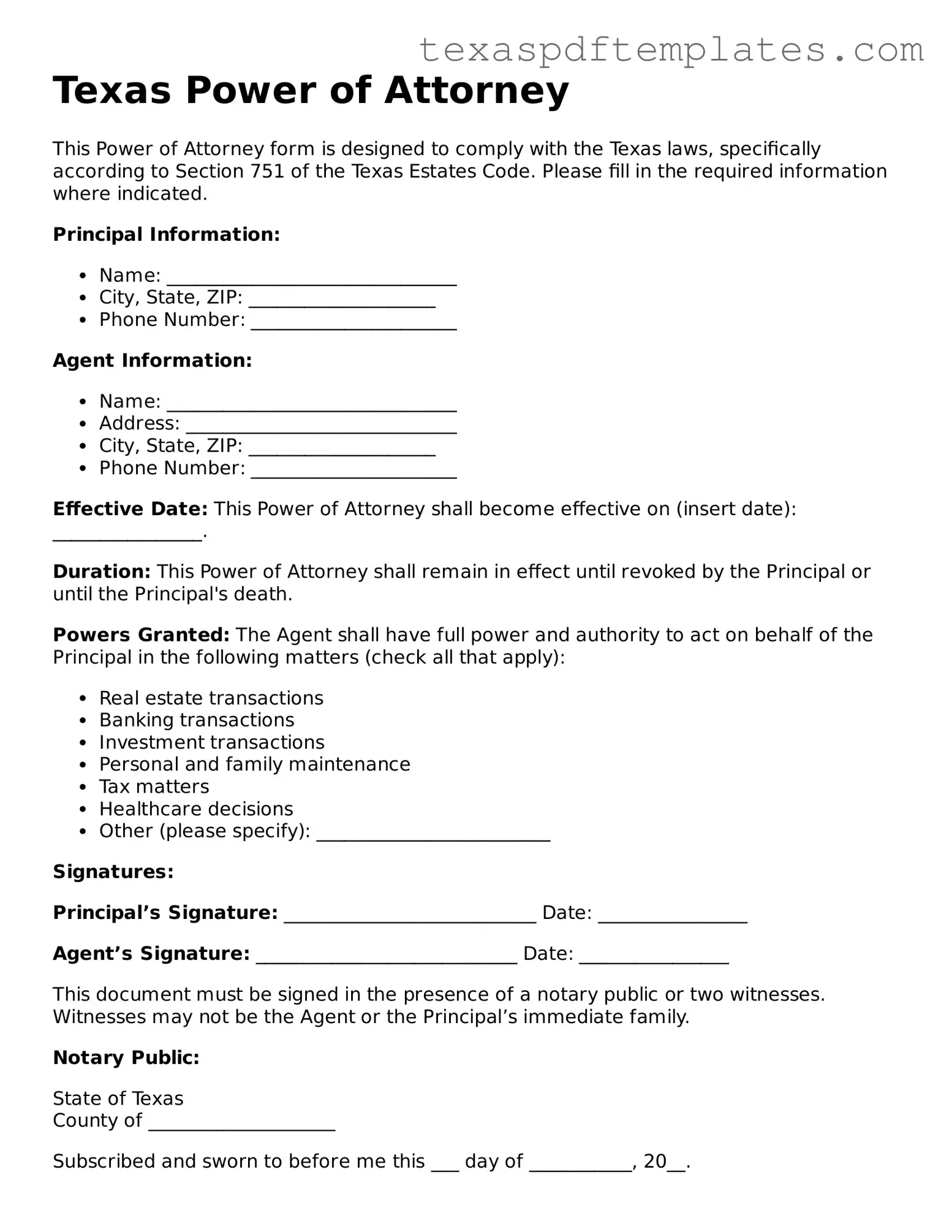Texas Power of Attorney
This Power of Attorney form is designed to comply with the Texas laws, specifically according to Section 751 of the Texas Estates Code. Please fill in the required information where indicated.
Principal Information:
- Name: _______________________________
- City, State, ZIP: ____________________
- Phone Number: ______________________
Agent Information:
- Name: _______________________________
- Address: _____________________________
- City, State, ZIP: ____________________
- Phone Number: ______________________
Effective Date: This Power of Attorney shall become effective on (insert date): ________________.
Duration: This Power of Attorney shall remain in effect until revoked by the Principal or until the Principal's death.
Powers Granted: The Agent shall have full power and authority to act on behalf of the Principal in the following matters (check all that apply):
- Real estate transactions
- Banking transactions
- Investment transactions
- Personal and family maintenance
- Tax matters
- Healthcare decisions
- Other (please specify): _________________________
Signatures:
Principal’s Signature: ___________________________ Date: ________________
Agent’s Signature: ____________________________ Date: ________________
This document must be signed in the presence of a notary public or two witnesses. Witnesses may not be the Agent or the Principal’s immediate family.
Notary Public:
State of Texas
County of ____________________
Subscribed and sworn to before me this ___ day of ___________, 20__.
____________________________________
Notary Public Signature
My commission expires: ______________________
